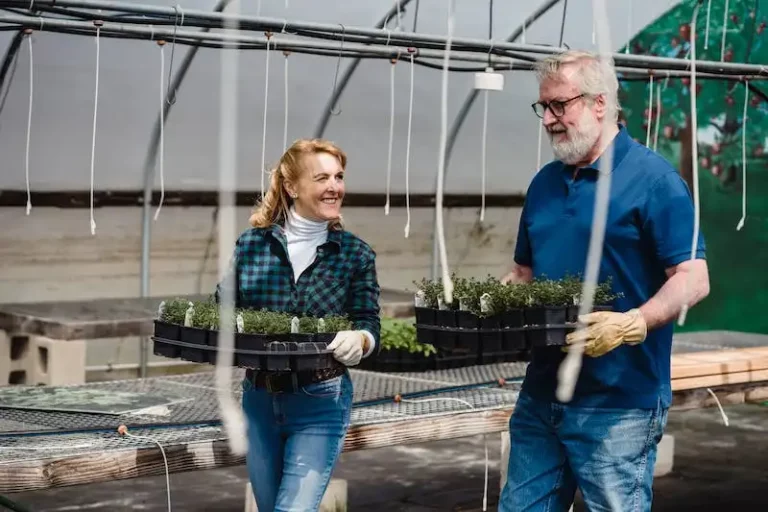Okra is a vegetable that looks like a long, thin pod with a unique texture. It is commonly grown in many parts of the world, including Florida, where it thrives in the warm climate. The wide range of okra varieties allows farmers and gardeners to choose the ones that best suit their needs.
One of the most popular okra varieties is the ‘Clemson Spineless 80’. As the name suggests, this variety is spineless, making it easier to handle during harvesting. It is also known for its high productivity, with each plant producing a large number of pods.
Another popular variety is the ‘Greenie’, which is recommended for its delicious flavor and tender texture. This variety is less commonly used in commercial production, but it is a favorite among home gardeners who enjoy frying or using okra in soups and stews.
The ‘Abelmoschus crinitus’ variety, also known as ‘Hibiscus okra’, is a unique variety that has been cultivated for its ornamental value. The plant produces beautiful, hibiscus-like flowers in addition to its edible pods. This variety is less productive compared to other okra varieties, but it adds a touch of beauty to any garden.
When choosing an okra variety, it is important to consider the climate and growing conditions. Some varieties, like the ‘Clemson Spineless 80’ and ‘Greenie’, are tolerant of higher temperatures and are ideal for hot climates. Other varieties, like the ‘Abelmoschus crinitus’, prefer cooler temperatures and thrive in spring and fall seasons.
In conclusion, there are many okra varieties to choose from, each with their own unique characteristics. Whether you are a commercial producer or a home gardener, there is an okra variety that suits your needs. Try different varieties and find the one that produces the best flavor, texture, and yield for you.
A Few Simple Tips to Grow a Maximum Okra Crop
Growing okra can be a rewarding experience, but it does require some knowledge and attention to detail. By following a few simple tips, you can increase the productivity and quality of your okra crop.
First and foremost, choose the right variety of okra to grow in your climate. Okra is a warm-season crop that thrives in hot and humid environments. Some popular varieties include Clemson Spineless, Emerald, and Jambalaya.
When planting okra, it’s important to keep in mind that okra plants can become tall and bushy, so make sure to provide them with enough space to grow. Plant the seeds in well-draining soil, about 1 inch deep and 12 to 18 inches apart. Okra seeds are easy to grow and usually germinate within a week.
Okra is a multipurpose plant, as not only can you harvest the pods, but you can also eat the young leaves and use the flowers for culinary purposes. Harvest the pods when they are young and tender, as older pods can become tough and fibrous. To promote continuous pod production, harvest the pods every two to three days.
Pruning okra plants can also help increase their productivity. By removing the bottom leaves and any side branches, you can redirect the plant’s energy towards pod development. However, be careful not to prune too much, as the leaves provide shade to the lower parts of the plant.
Another important factor to consider is watering. Okra plants have deep root systems and can tolerate drought to some extent. However, they do require regular watering, especially during dry periods. Water the plants deeply once or twice a week, ensuring that the soil remains evenly moist.
Okra is known for its ability to withstand high temperatures and thrive in hot climates. However, it is also susceptible to certain diseases, such as mosaic virus and root knot nematodes. To prevent these issues, it is recommended to plant disease-resistant varieties, practice crop rotation, and maintain good garden hygiene.
In conclusion, growing a maximum okra crop is easier when you follow these simple tips. By selecting the right variety for your climate, planting the seeds properly, providing adequate spacing, and caring for the plants, you can enjoy a bountiful harvest of delicious okra pods. So why not give it a try and experience the joy of growing your own okra?
Harvesting Okra
Harvesting okra is a simple task that can be done when the pods are ready to be picked. Okra plants are known for being tolerant of hot weather and can bear fruit for a long period of time. The scientific name for okra is Abelmoschus esculentus.
When harvesting okra, it is important to know that the pods should be picked when they are still tender and not too long. Okra pods that have stayed on the plant longer can become tough and woody. It is recommended to harvest okra pods that are about three to four inches long.
Although it may be tempting to wait for the pods to grow larger, it is best to pick them at a smaller size. Smaller pods are not only easier to harvest, but they also tend to be more tender and flavorful. Waiting too long to pick the pods can result in a decrease in productivity.
Okra plants generally start producing pods around three to four months after planting. However, the exact timeframe can vary depending on the variety and growing conditions. Some varieties, such as the Burmese Okra and the Spring Okra, have a shorter time to maturity and may produce pods earlier. On the other hand, varieties like the Greenie Okra and the Motis Hibiscus Okra may take longer to produce pods.
| Variety | Days to Maturity | Productivity | Remarks |
|---|---|---|---|
| Burmese Okra | 60-70 days | High | Delicious pods |
| Spring Okra | 50-55 days | High | Early producer |
| Greenie Okra | 70-80 days | Medium | Takes longer to produce |
| Motis Hibiscus Okra | 80-90 days | High | Productive variety |
When harvesting okra, it is important to have a sharp knife or garden shears to cut the stem of the pod. This method prevents damage to the plant and ensures that the pod is cleanly cut. Avoid pulling or twisting the pod to avoid damaging the plant.
It is also important to be aware of any solutions or tips for harvesting okra. For example, some growers recommend wearing gloves to protect against the spines on the okra plant. Others suggest harvesting in the morning when the pods are still cool. Trial and error is often the best way to determine the optimal harvesting time for your specific variety and growing conditions.
After harvesting, okra pods can be used in a variety of ways. They can be cooked and eaten as a vegetable, added to soups and stews, or even pickled. The seeds of the okra plant can also be dried and saved for future planting.
In conclusion, harvesting okra is a simple and rewarding process. By following these tips and guidelines, you can ensure a bountiful harvest of this delicious and versatile vegetable.
Okra Varieties
Gardeners have a wide variety of okra to choose from, each with its own unique characteristics. Some varieties have higher yields, while others produce more solid pods. Here are a few different okra varieties that gardeners may consider planting:
- Abelmoschus esculentus: This is the most common okra variety, often simply referred to as “okra.” It is easy to grow and known for its long, slender pods.
- Burmese: This variety stayed green even after trials in the spring, making it an attractive option for gardeners. It produces a good yield of flavorful and tender pods.
- Greenie: Greenie has large pods that are ready to harvest later in the season. Its yield is high and the pods are easy to pick.
- Multipurpose: This variety is known for producing both edible pods and beautiful flowers. It is a popular choice among gardeners who want both beauty and productivity in their gardens.
- Okree: Okree is a newer variety that has gained popularity in recent years. It has a high yield and bears huge pods. The plant is resistant to mosaic virus.
- Ufifas: Ufifas is a variety that produces a good yield of solid pods. It has a great taste and is easy to grow.
When planting okra, it is important to ensure that the variety thrives in your specific growing conditions. Some varieties do better in certain climates or soil types, so it is recommended to do some research before making your final selection.
To learn more about okra varieties and planting tips, check out the following links:
Okra
Okra is a vegetable that is very popular in many warm climate regions around the world. Although it is commonly seen in the southern United States, it can also be found in other parts of the country and the world. Okra is a member of the hibiscus family and it looks similar to hibiscus when it is flowering.
Okra is a multipurpose plant with many different characteristics. It is known for its ability to produce a slimy texture when cooked, which is why it is often used in dishes such as gumbo. However, it can also be fried and used in a variety of other recipes. Okra is also known for its high nutritional value and is a good source of vitamins A, C, and K, as well as several minerals.
Okra is a relatively easy plant to grow, although it does have some specific requirements. It is typically planted in rows and needs a warm climate to thrive. Okra plants should be started in the spring to ensure a good crop. They can be grown from seed or transplants, although growing from seed is more commonly done. Okra plants can grow quite tall, often reaching six feet or more, so gardeners should ensure they have adequate space in their garden.
Okra plants are also known for their ability to tolerate a wide range of soil types, although they do best in well-drained soil with a pH between 5.5 and 7.0. They also require full sun and benefit from regular fertilizer applications. Once the plants are established, they require little care. They should be watered regularly, especially during dry periods, and weeds should be controlled to prevent competition for nutrients.
Okra plants typically start producing pods about two months after planting. The pods are ready for harvesting when they are about two to four inches long. If left on the plant for longer, the pods will become tough and less desirable. Pods can be harvested by cutting them from the plant with a sharp knife or scissors. It is important to handle the pods carefully to avoid damage, as they can be easily bruised.
Okra comes in many different varieties, each with its own unique characteristics. Some varieties, such as ‘Abelmoschus esculentus’ (common okra), are more commonly seen and widely grown, while others are less common. Some popular varieties include ‘Clemson Spineless’, ‘Emerald’, and ‘Burpee’s Dwarf’, among others. Each variety has its own unique taste, texture, and flavor, so gardeners can choose the ones that best suit their preferences.
| Variety | Characteristics |
|---|---|
| Clemson Spineless | Moderate producer, relatively short plant |
| Emerald | High yielding, disease resistant |
| Burpee’s Dwarf | Compact plant, good for containers |
Overall, okra is a versatile and delicious vegetable that can be enjoyed in a variety of ways. Its unique texture and flavor make it a popular choice for many dishes, including soups, stir-fries, and stews. Whether you are a seasoned gardener or just starting out, okra is a great addition to any garden.
Sources:
– UF/IFAS Gardening Solutions. “Okra Varieties.” UF/IFAS Extension, 28 Jan. 2024, gardeningsolutions.ifas.ufl.edu.


